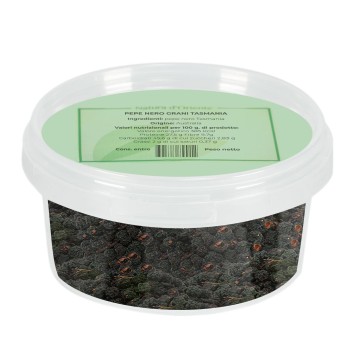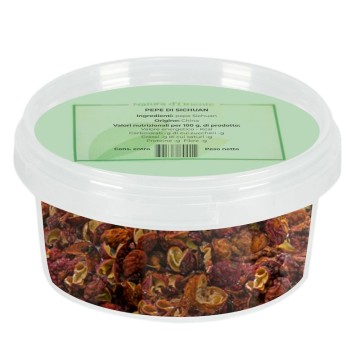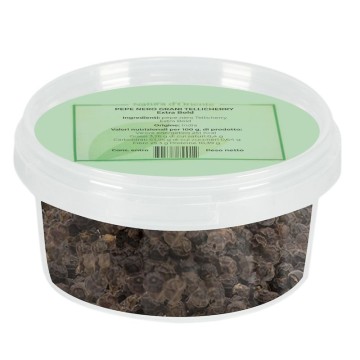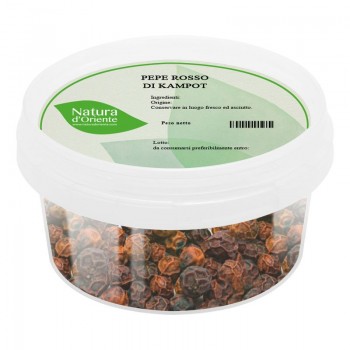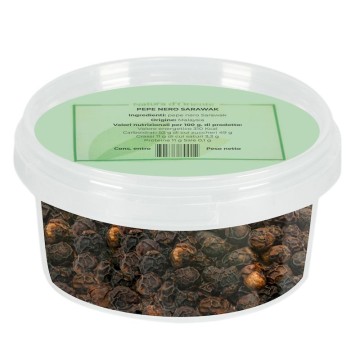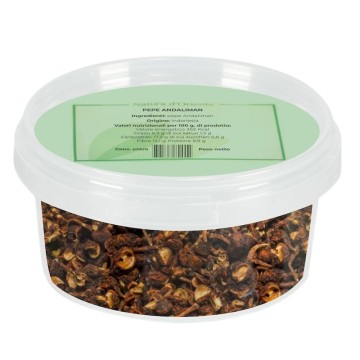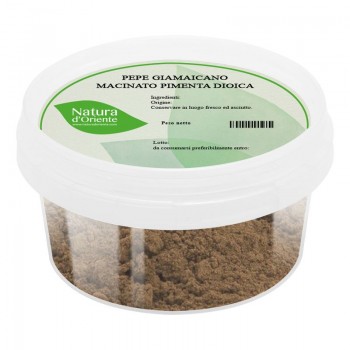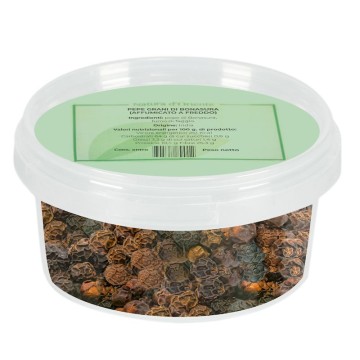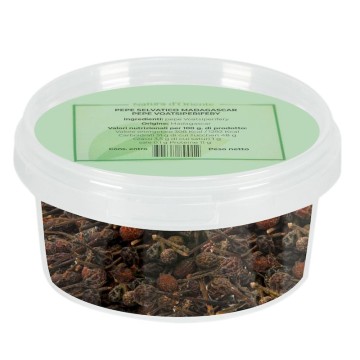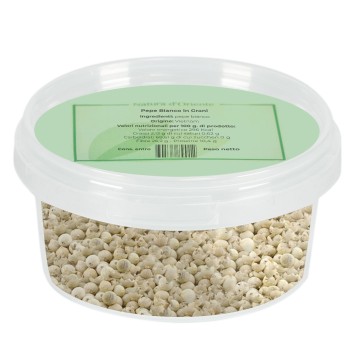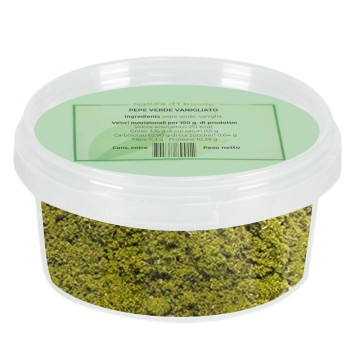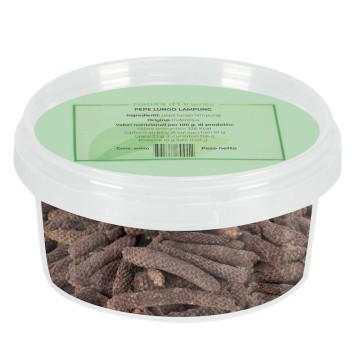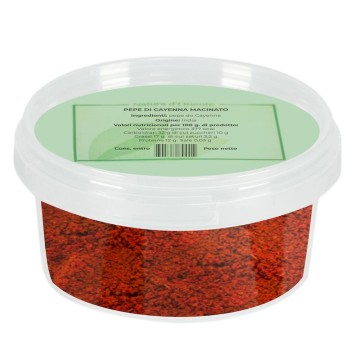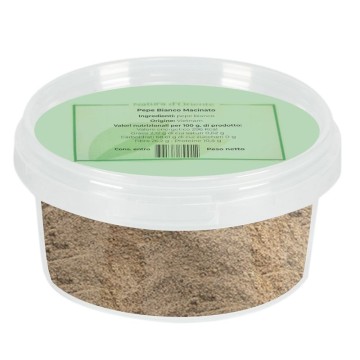Cumeo pepper is a false pepper, a spice that is only slightly or not at all spicy and with an aroma that has camphor and citrus notes , someone will find you a similarity with cardamom, certainly notes of laurel are also perceived and this is certainly not a surprise given the botanical relationship.
The plant from which the Cumeo pepper is obtained
False pepper we said, that is a spice that can remember pepper in appearance and sometimes also in flavor (not much in this case) but obtained from a plant other than piper nigrum and that sometimes it is not even remotely related. Cumeo pepper is the fruit of a plant that grows at the foot of the Himalayas at an altitude between 1200 and 2700 meters, called Lindera Neesiana, the plant belongs to the Lauraceae family, that is the same as the laurel.
It is a tree that grows spontaneously in a border area between Nepal and India reaching heights of 5-8 meters. On the tops of the branches, long inflorescences develop which then become clusters of red berries 6-8 mm in diameter containing a single seed.
Production of cumeo pepper
It is a rather rare spice because there is no agriculture, the harvest is carried out from plants in the wild. As with other spices in other parts of the world where traditional methods are still used, the harvest is done by hand when fully ripe and the berries then go through a drying process that occurs naturally in the sun, following which they darken. All these aspects, the collection from wild plants carried out by hand, combined with the difficulty of transport from these remote areas makes the harvest limited in quantity, hence the rarity of the spice.
Organoleptic characteristics of Cumeo pepper and use in the kitchen
The scent is similar to that of lemongrass, in fact lemongrass is one of the essential oils it contains, the taste recalls various citrus fruits, but also a slight hint of camphor and eucalyptus, therefore a rather fresh flavor for this spice that has little to do with that of pepper.
According to some, the spiciness is completely absent, according to some it is very slight, the anesthetic effect of the hottest spices is certainly absent. On the other hand, there is a slightly bitter aftertaste. Use in the kitchen: local populations use Cumeo pepper for mushroom-based preparations but its fresh and slightly spicy flavor actually favors pairing with the most diverse dishes, from fish (to which it gives a lemon aroma) to desserts, passing through vegetarian dishes , in the latter case it is indicated on grilled vegetables but also in spices and for those who love spicy a combination with chilli pepper is recommended .
Looking for recipes on the net we discovered that given the rarity of Cumeo pepper they are not easily found, especially by more or less amateur chefs, instead it is often mentioned by top chefs , who love to experiment with novelties and exclusive products, especially the cumeo pepper seems to have stimulated the imagination of those who try their hand at sweets, but we have chosen the recipe for a nice plate of spaghetti with cuttlefish ink.
Spaghetti with cuttlefish ink with yuzu and bottarga with cumeo pepper
Ingredients for four people:
Spaghetti 280 gr
White miso 70 gr
Bottarga di mullet 12 gr
Yuzu or lime juice 14 gr
Extra virgin olive oil 28 gr Cumeo pepper from Nepal
Anchovy sauce 1 tablespoon
Cuttlefish ink powder to taste
Preparation
1) Cook the spaghetti
2) Put the white miso in a mixer
3) Add the other ingredients (bottarga, yuzu or alternatively lime juice, extra virgin olive oil, cumeo pepper and anchovy sauce) and mix well with an immersion blender.
4) Drain the spaghetti
5) Add the miso sauce to the spaghetti
6) Serve and sprinkle with cuttlefish ink
Alternatively: 5) Sauté the spaghetti in the wok with the miso sauce
Recipe source: Saporie.com




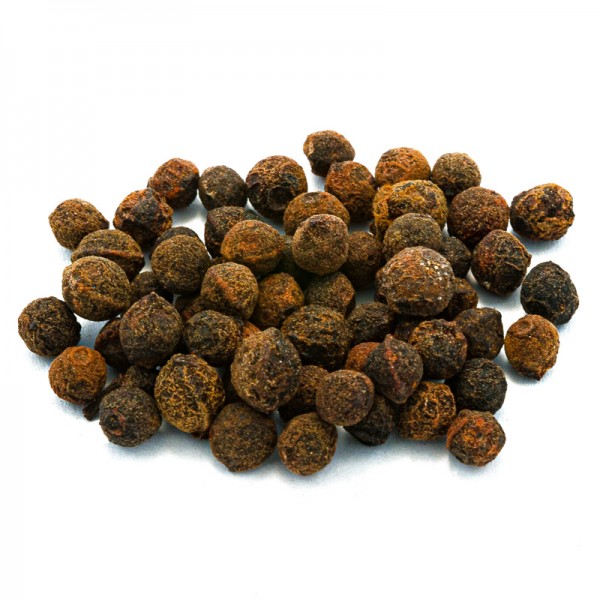




 No reward points for this product.
No reward points for this product.
